Structural Safety of Homes – an Overlooked Aspect
When we think about our homes, we often focus on aesthetics, comfort, and functionality. However, one critical aspect that frequently slips our minds is structural safety. It's like the foundation of a house: out of sight, yet essential to its stability. This article will dive into the significance of structural safety in residential buildings, exploring common risks, preventive measures, and the vital role of regulations in ensuring the safety and longevity of our homes.
Structural safety refers to the ability of a building to withstand various loads and environmental factors, ensuring the protection of its occupants. Think of it as the backbone of your home; without it, everything else crumbles. The fundamental principles that govern structural integrity include the ability to support weight, resist forces from nature, and endure the test of time. A well-constructed home is not just about pretty walls and fancy roofs; it's about creating a safe haven that can withstand the elements.
Various risks can compromise the structural safety of homes, including natural disasters, poor construction practices, and material degradation. By identifying and discussing these risks, we can raise awareness among homeowners and encourage proactive measures. For instance, imagine living in a house built with subpar materials; it's like driving a car with bald tires. You might get by for a while, but eventually, disaster is likely to strike.
Natural disasters such as earthquakes, floods, and hurricanes pose significant threats to residential structures. When these events occur, they can wreak havoc on homes, leaving families displaced and properties in ruins. It's essential to understand how these events affect homes and the necessary precautions to mitigate damage. For example, did you know that homes built in flood-prone areas can be significantly improved with the right flood resistance measures?
Understanding how to prepare homes for earthquakes is crucial in minimizing damage. This part outlines essential design features and retrofitting techniques that enhance a home's resilience against seismic activity. Think of it as giving your house a strong set of muscles; the stronger it is, the better it can handle the shaking. Key features include:
- Base Isolation: This technique allows the building to move independently of ground motion.
- Reinforced Walls: Using steel or other materials to strengthen walls can make a significant difference.
- Flexible Utilities: Ensure that gas and water lines can flex during an earthquake to prevent ruptures.
Implementing flood resistance measures can save homes from severe water damage. Strategies like elevation, drainage systems, and waterproof materials are essential for protecting properties in flood-prone areas. Elevating your home is akin to putting it on stilts; it keeps your living space safe above rising waters. Additionally, investing in quality drainage systems can direct water away from your property, acting like a moat around a castle.
The quality of construction plays a vital role in ensuring structural safety. Adhering to building codes and hiring qualified professionals are crucial steps in maintaining high standards. Imagine building a sandcastle; if you don’t use enough water to bind the sand, it will collapse. Similarly, using inferior materials or untrained labor can lead to catastrophic failures in your home’s structure.
Routine maintenance and inspections are essential for identifying potential structural issues before they escalate. Think of it as a regular check-up for your home; just like you wouldn’t skip your annual physical, your home deserves the same attention. This proactive approach can preserve the safety of homes over time, ensuring that they remain safe havens for families.
Recognizing the early signs of structural damage can prevent further complications. Homeowners should be vigilant and look for indicators such as:
- Cracks in walls or ceilings
- Uneven floors that feel like they’re sloping
- Water damage or stains on walls
By being aware of these signs, you can address issues before they escalate into costly repairs or safety hazards.
Engaging professional inspectors can provide an in-depth assessment of a home's structural integrity. These experts can identify hidden issues that may not be visible to the untrained eye. Think of them as the detectives of your home; they can uncover problems lurking beneath the surface. The benefits of expert evaluations include:
- Thorough inspections that cover all aspects of structural safety
- Expert recommendations for repairs or improvements
- Peace of mind knowing your home is safe
Understanding the regulatory framework surrounding residential construction is crucial for ensuring safety. Building codes and regulations are in place to protect homeowners and the community by enforcing minimum safety standards. Ignoring these regulations can lead to serious consequences, much like ignoring traffic laws can lead to accidents.
Building codes serve as guidelines for construction practices, ensuring safety and quality. They act as the rulebook for builders, outlining what materials to use and how to construct homes. By adhering to these codes, homeowners can avoid potential disasters down the road.
Non-compliance with building regulations can lead to serious legal and financial repercussions. Homeowners and builders alike must understand their responsibilities and the implications of failing to adhere to safety standards. It’s like playing a game without knowing the rules; the consequences can be dire.
Q: What are the most common signs of structural damage?
A: Common signs include cracks in walls, uneven floors, and water damage.
Q: How often should I have my home inspected for structural safety?
A: It's recommended to have your home inspected at least once every few years, or more frequently if you notice any signs of damage.
Q: What can I do to prepare my home for an earthquake?
A: Consider retrofitting your home with base isolation, reinforcing walls, and ensuring flexible utility lines.
Q: Are building codes the same everywhere?
A: No, building codes vary by location, so it's essential to check local regulations when constructing or renovating a home.

Understanding Structural Safety
Structural safety is a fundamental aspect of any residential building, and yet it often flies under the radar for many homeowners. Imagine your home as a sturdy ship navigating through the unpredictable waters of life; it needs to be built to withstand storms, waves, and the occasional rough tide. In this context, structural safety refers to a building's ability to endure various loads—like the weight of the building itself, the occupants, furniture, and environmental factors such as wind, rain, and even seismic activity. Essentially, it’s about ensuring that your home can safeguard you and your loved ones from potential hazards.
At the core of structural safety lies the concept of structural integrity. This means that the materials used in construction, the design of the building, and the methods employed must all work together harmoniously. Think of it as a symphony; if one instrument is out of tune, the entire performance can fall flat. The fundamental principles governing structural integrity include:
- Load-Bearing Capacity: This refers to how much weight a structure can support without failing.
- Stability: A stable structure maintains its position and shape under various forces.
- Durability: Materials should withstand environmental conditions over time without significant degradation.
Understanding these principles is crucial for homeowners, as they directly impact the safety and longevity of a home. For instance, if a house is built with subpar materials or faulty construction techniques, it may not only compromise the safety of its occupants but also lead to costly repairs down the line. Moreover, the importance of adhering to building codes cannot be overstated. These codes are established by regulatory bodies to ensure that all residential constructions meet minimum safety standards.
Furthermore, it’s essential to recognize that structural safety is not a one-time consideration. Just like a car requires regular maintenance to keep it running smoothly, homes also need ongoing attention to their structural components. This includes periodic inspections, timely repairs, and upgrades when necessary. By being proactive about structural safety, homeowners can significantly reduce the risk of catastrophic failures and ensure a safe living environment for their families.
In summary, understanding structural safety is about more than just knowing the basics; it's about becoming an informed homeowner who recognizes the value of a safe and secure living space. By prioritizing structural integrity, you not only protect your investment but also enhance your peace of mind. After all, your home should be a sanctuary, not a source of anxiety.

Common Structural Risks
When it comes to ensuring the safety of our homes, we often focus on aesthetics or comfort, but structural risks can silently undermine the integrity of our beloved abodes. These risks can stem from various sources, and understanding them is the first step toward safeguarding your home. Let's dive into the common structural risks that every homeowner should be aware of.
One of the most significant threats to residential structures is natural disasters. Events such as earthquakes, floods, hurricanes, and tornadoes can wreak havoc on the structural integrity of a home. For instance, an earthquake can cause the ground to shake violently, leading to cracks in walls and even complete structural failure. Similarly, floods can saturate the ground, undermining foundation stability and causing walls to bow or buckle. It's crucial to recognize these risks and implement strategies to mitigate their impact.
Moreover, poor construction practices can also pose a serious threat to structural safety. Homes built without adhering to established building codes are at a higher risk of experiencing structural failures. For example, using subpar materials or skipping essential steps in the construction process can lead to long-term issues, such as settling or shifting foundations. Homeowners should always ensure that their properties are built by qualified professionals who follow local regulations and standards.
Another often-overlooked risk is material degradation. Over time, the materials used in construction can deteriorate due to exposure to the elements, lack of maintenance, or even pest infestations. For instance, wood can rot when exposed to moisture, while metal can corrode over time. Regular inspections and maintenance can help identify these issues before they escalate into more significant problems that compromise the structural safety of your home.
To summarize, the common structural risks that homeowners face include:
- Natural Disasters: Earthquakes, floods, hurricanes, and tornadoes.
- Poor Construction Practices: Non-compliance with building codes and use of inferior materials.
- Material Degradation: Deterioration of materials due to environmental factors and lack of upkeep.
By being aware of these risks, homeowners can take proactive measures to protect their homes. Whether it's reinforcing the structure against natural disasters, ensuring quality construction, or scheduling regular maintenance checks, each step taken can significantly enhance the safety and longevity of a home.
Q: What can I do to prepare my home for natural disasters?
A: Consider investing in retrofitting techniques, such as bolting your home to its foundation and using hurricane straps to secure the roof. Additionally, ensure that your property is equipped with proper drainage systems to mitigate flooding.
Q: How often should I have my home inspected for structural integrity?
A: It's advisable to have a professional inspection at least once a year, or more frequently if you live in an area prone to natural disasters or if you notice signs of structural damage.
Q: What are the signs of poor construction practices?
A: Look for uneven floors, cracks in walls, doors that stick or don't close properly, and visible signs of water damage. These can indicate underlying structural issues.
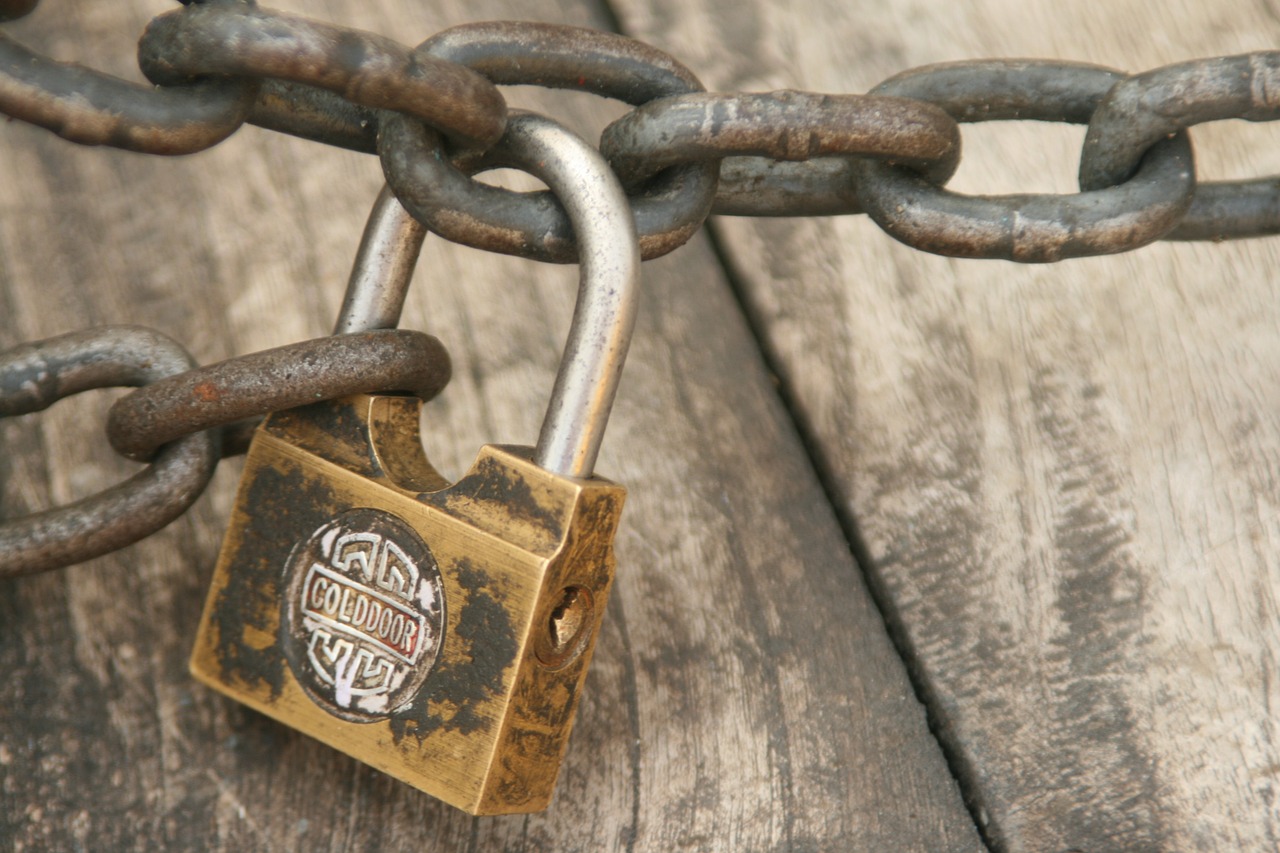
Impact of Natural Disasters
Natural disasters are like the unexpected guests that crash your party, and they can wreak havoc on your home in ways you might not even imagine. Whether it's a sudden earthquake shaking the very foundation of your house, a flood turning your living room into a swimming pool, or a hurricane ripping off your roof, the impact of these events can be devastating. It's crucial to understand how these disasters affect residential structures and what you can do to prepare.
First off, let's talk about earthquakes. When the ground starts to shake, it's not just a minor inconvenience; it can lead to serious structural damage. The intensity of the shaking can cause walls to crack, foundations to shift, and even roofs to collapse. In regions prone to seismic activity, it's essential to incorporate earthquake-resistant design features into your home. This includes using flexible materials that can absorb shock, reinforcing walls, and ensuring that your foundation is solid.
Next, we have floods, which can be equally destructive. Heavy rainfall or rapid snowmelt can lead to water inundation, causing significant damage to your property. Floodwaters can erode foundations, warp wooden structures, and lead to mold growth, which can compromise the health of your family. To combat this, homeowners in flood-prone areas should consider implementing flood resistance measures. Elevating your home, installing proper drainage systems, and using waterproof materials can make a world of difference in protecting your property.
Hurricanes are another formidable foe. With their strong winds and torrential rains, hurricanes can tear through neighborhoods, leaving a trail of destruction in their wake. The pressure from high winds can cause roofs to lift and windows to shatter, while flooding can lead to long-term damage. Homeowners should invest in hurricane-proofing measures, such as impact-resistant windows, reinforced roofs, and secure outdoor structures. Being proactive is key to minimizing damage when these natural disasters strike.
In summary, the impact of natural disasters on homes is profound and often underestimated. By understanding the risks associated with earthquakes, floods, and hurricanes, homeowners can take proactive measures to safeguard their residences. Remember, it's not just about repairing damage after a disaster; it's about preparing your home to withstand the forces of nature. So, ask yourself, are you ready for the unexpected?
- What are the most common natural disasters that affect homes? Earthquakes, floods, hurricanes, and tornadoes are among the most common natural disasters that can impact residential structures.
- How can I prepare my home for an earthquake? Implement earthquake-resistant design features, reinforce your foundation, and secure heavy furniture to walls.
- What flood resistance measures can I take? Elevate your home, install drainage systems, and use waterproof materials to protect against flooding.
- How can I hurricane-proof my home? Invest in impact-resistant windows, secure your roof, and ensure outdoor structures are properly anchored.
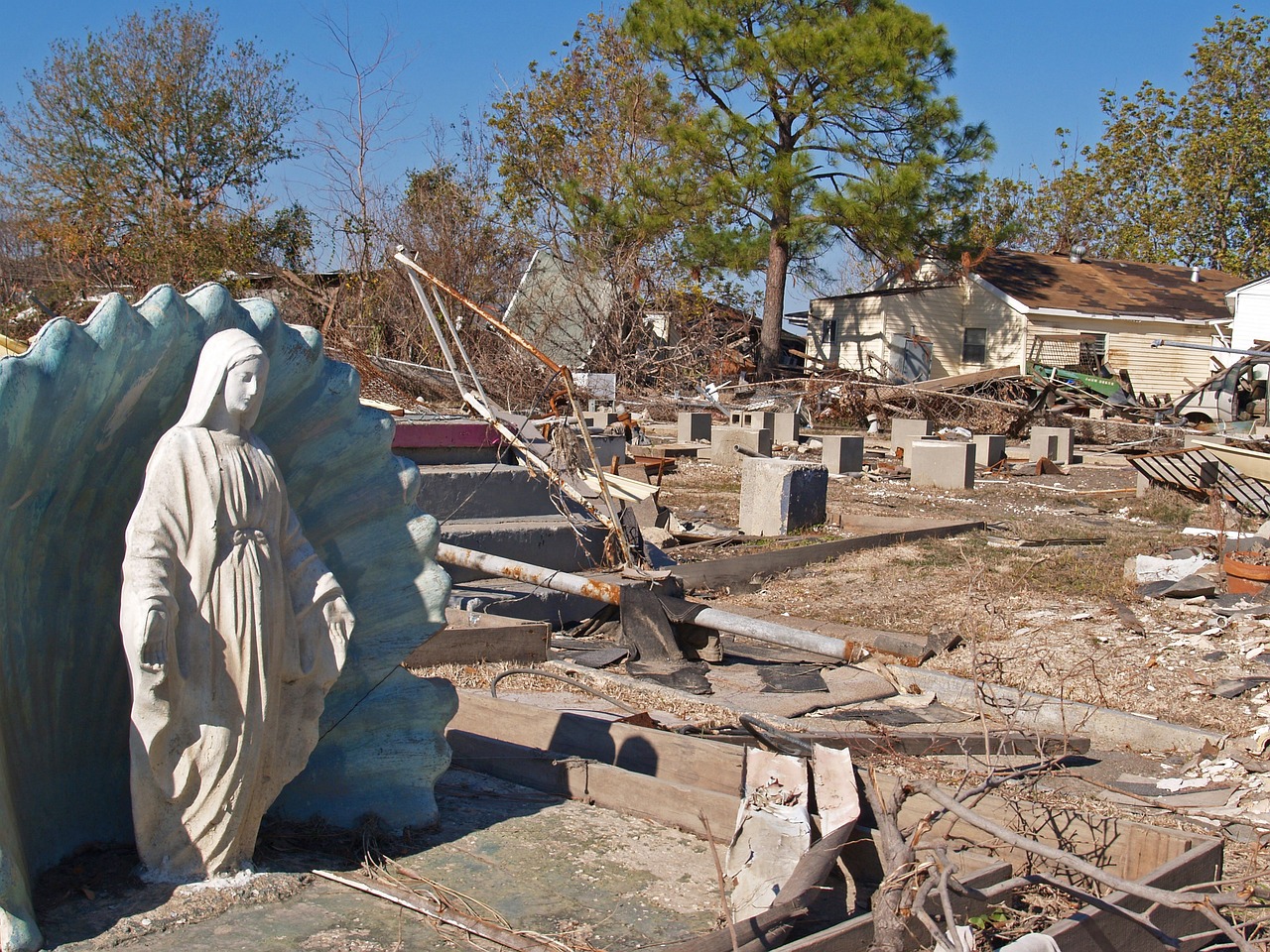
Earthquake Preparedness
When it comes to safeguarding our homes against the unpredictable forces of nature, is a crucial aspect that often gets overlooked. Imagine your home as a fortress; it needs to be built not just to look good but to withstand the elements, especially in areas prone to seismic activity. So, how can you transform your home into a resilient structure that can weather an earthquake? Let’s dive into some essential design features and retrofitting techniques that can enhance your home's ability to endure such natural disasters.
One of the first steps in earthquake preparedness is to evaluate the foundation of your home. A strong foundation is like the roots of a tree; it keeps the structure stable during tremors. If your home is built on a weak or unstable foundation, consider hiring a professional to assess and reinforce it. Techniques such as adding steel reinforcements or using concrete piers can significantly improve your home’s stability.
In addition to a solid foundation, the structural design of your home plays a vital role in its earthquake resilience. Homes designed with a symmetrical layout and a low center of gravity tend to perform better during seismic events. Think of it like balancing a pencil on your finger; the more stable the base, the easier it is to keep upright. If your home has an irregular shape or is multi-storied, retrofitting may be necessary. This can include adding shear walls or cross-bracing to help distribute the forces more evenly across the structure.
Another key component of earthquake preparedness is securing heavy furniture and appliances. During an earthquake, the last thing you want is for your television or bookshelf to become a projectile. Use straps and anchors to secure these items to the walls. Not only does this protect your belongings, but it also keeps your living space safe for everyone inside. You can also consider installing flexible gas lines to prevent leaks and potential fires during seismic activity.
It's important to remember that no home is completely earthquake-proof; however, by implementing these strategies, you can significantly reduce the risk of damage and enhance safety for your family. Regularly reviewing and updating your preparedness plan is essential, especially as new technologies and building practices emerge. Just like you wouldn’t wear the same shoes for every occasion, your home’s defenses should evolve as well.
To summarize, earthquake preparedness is not just about having a plan; it’s about taking proactive measures to ensure your home is structurally sound. By focusing on foundation stability, structural design, securing heavy items, and staying informed about new safety practices, you can protect what matters most when the ground starts to shake.
- What is the best way to secure heavy furniture during an earthquake?
Use straps and anchors to secure furniture to the walls, and ensure that items are placed away from windows and doorways. - How can I tell if my home is at risk for earthquake damage?
Look for signs of foundation issues, such as cracks in walls or uneven floors, and consult a professional for a thorough assessment. - What should I include in my earthquake emergency kit?
Your kit should include water, non-perishable food, a flashlight, batteries, a first aid kit, and important documents.

Flood Resistance Measures
Flooding can be a homeowner's worst nightmare, wreaking havoc on properties and leaving lasting damage. To combat this, it's essential to implement that can significantly reduce the risk of water damage. Think of these measures as a protective shield around your home, ready to defend against the relentless forces of nature. So, what are some effective strategies you can adopt to safeguard your property?
First and foremost, elevation is one of the most effective ways to protect your home from floods. By raising your home above the base flood elevation, you can minimize the chances of water entering your living space. This is particularly crucial in areas prone to heavy rainfall or near bodies of water. If elevating your entire home isn't feasible, consider elevating critical utilities such as your heating system, electrical panels, and water heaters to prevent them from being damaged.
Another key strategy is the installation of drainage systems. Proper drainage can redirect water away from your home, significantly reducing the risk of flooding. This includes installing French drains, which collect and redirect water, or utilizing sump pumps that can remove excess water from basements. It's like having a safety net that catches water before it can cause harm. Additionally, maintaining your gutters and downspouts ensures that rainwater is effectively channeled away from your foundation.
Using waterproof materials for construction can also make a substantial difference in flood resistance. Consider using materials that resist water absorption, such as concrete, brick, or specially treated wood. These materials not only help in preventing water damage but also enhance the overall durability of your home. Furthermore, applying waterproof coatings to walls and foundations can provide an extra layer of protection, like a raincoat for your house.
In some cases, homeowners may also want to consider flood barriers or flood walls. These structures can be installed around your property to block rising waters. They act as a formidable barrier, preventing water from encroaching on your home. While they can be a more significant investment, the peace of mind they provide during storm season can be invaluable.
Ultimately, the key to successful flood resistance lies in a combination of these strategies tailored to your specific location and risk level. Regularly assessing your home's vulnerabilities and adapting your flood protection measures as needed can make all the difference in ensuring your home remains a safe haven during severe weather.
- What is the best way to prepare my home for flooding? Elevating your home and installing effective drainage systems are top recommendations.
- Are there materials that can help prevent flood damage? Yes, using waterproof materials like treated wood or concrete can significantly reduce water damage.
- How often should I check my flood resistance measures? It's advisable to assess your flood protection measures at least once a year, especially before the rainy season.
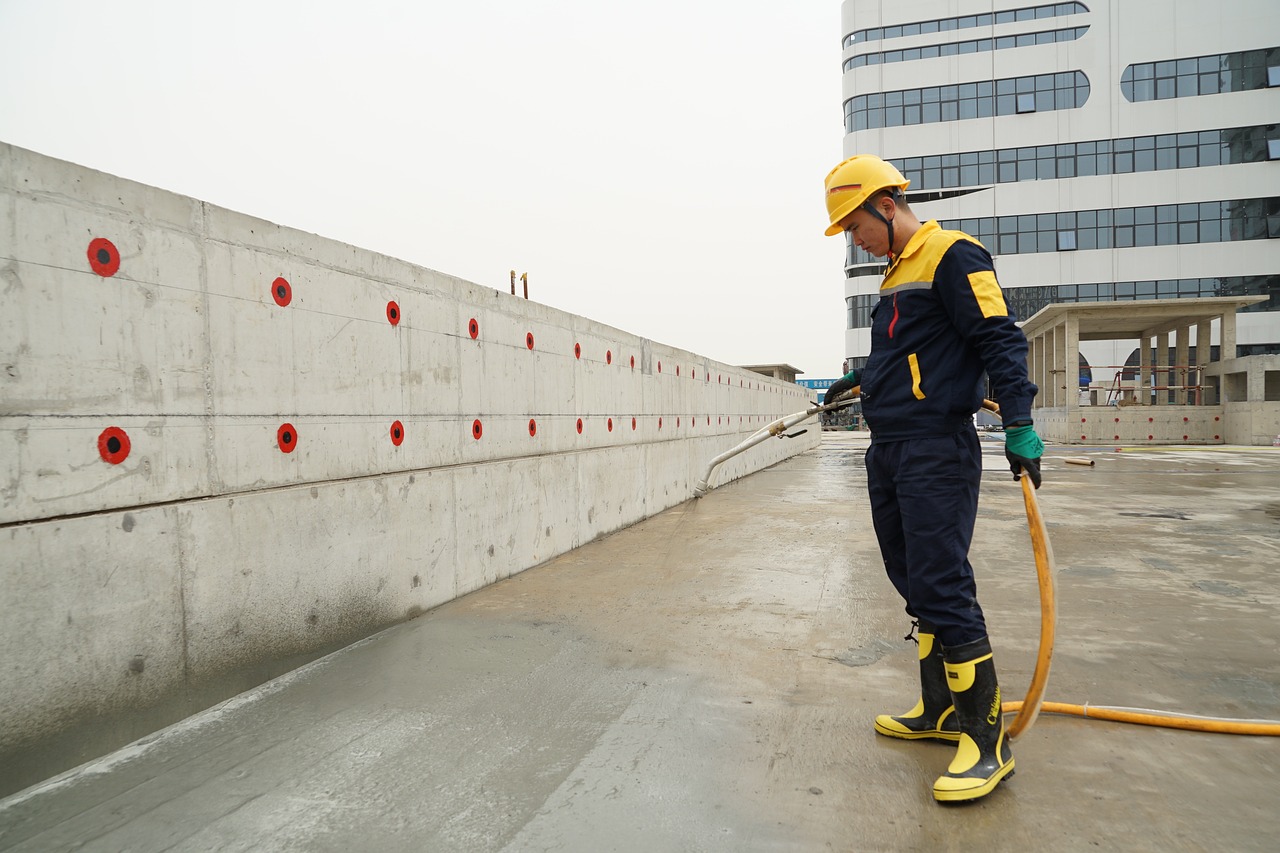
Construction Quality and Standards
When it comes to the safety of our homes, the quality of construction cannot be overstated. A well-constructed home not only provides a safe haven for its occupants but also ensures longevity and durability against the elements. Imagine your home as a fortress; if the walls are made of straw instead of brick, how secure would you feel? This analogy highlights the critical importance of using high-quality materials and skilled labor during the building process.
One of the fundamental aspects of construction quality is adherence to building codes. These codes are established regulations that set minimum safety standards for construction practices. They cover various elements such as structural integrity, fire safety, plumbing, and electrical systems. Compliance with these codes is not just a legal obligation but a moral one, ensuring that homes are built to withstand the test of time and nature.
Moreover, the choice of materials plays a significant role in determining a home's structural safety. For instance, using subpar materials can lead to issues like cracking, warping, and even catastrophic failures in extreme conditions. Homeowners should be aware of the types of materials used in their homes and ensure they meet industry standards. Here are some common materials and their importance:
- Concrete: Known for its strength and durability, it forms the foundation of many homes.
- Steel: Often used for framing, it provides additional strength, especially in areas prone to earthquakes.
- Wood: While versatile and aesthetically pleasing, it must be treated to prevent rot and pest damage.
Hiring qualified professionals is another critical factor in maintaining high construction standards. A skilled architect or contractor not only brings expertise but also a commitment to quality. They understand the nuances of local codes and can navigate the complexities of construction, ensuring that every aspect of the build meets or exceeds safety standards. It’s like having a seasoned captain steering a ship through stormy waters; their experience can make all the difference in reaching the destination safely.
In addition to hiring professionals, homeowners should also engage in regular communication with their builders. This involves asking questions, seeking clarifications, and being involved in the decision-making process. Transparency during construction can significantly reduce the chances of errors and misunderstandings, ultimately safeguarding the home's structural integrity.
Lastly, it’s essential to recognize that construction quality does not end once the home is built. Regular inspections and maintenance are vital to ensure that the structure remains safe over time. Just as a car requires regular servicing to function optimally, so does a home need periodic checks to identify and rectify any potential issues before they escalate.
In summary, the quality of construction and adherence to standards are paramount in ensuring the safety and longevity of homes. From choosing the right materials to hiring qualified professionals and maintaining open communication, every step taken in the construction process contributes to a secure living environment. Remember, your home is not just a structure; it’s a sanctuary, and investing in its quality is investing in your peace of mind.
Q: How can I ensure my home is built to code?
A: The best way to ensure your home is built to code is to hire a licensed contractor who is familiar with local building regulations. Additionally, request regular inspections throughout the construction process.
Q: What should I look for in construction materials?
A: Look for materials that are certified for quality and durability. Check for warranties and ratings from reputable manufacturers to ensure they meet industry standards.
Q: How often should I inspect my home for structural issues?
A: It's advisable to conduct a thorough inspection at least once a year, or more frequently if you notice any signs of damage, such as cracks or water leaks.
Q: Can I make modifications to my home without a permit?
A: It depends on the type of modification. Minor repairs may not require a permit, but significant changes, especially those affecting structural integrity, typically do. Always check with your local building authority.

Regular Maintenance and Inspections
When it comes to ensuring the structural safety of our homes, are not just optional; they are absolutely essential. Think of your home as a living organism that requires care and attention to thrive. Just like how we visit a doctor for check-ups, our homes need their own kind of healthcare. By scheduling routine inspections, homeowners can identify potential structural issues before they escalate into costly repairs or even safety hazards.
One of the most critical aspects of this process is understanding what to look for. Homeowners should be aware of various signs of structural damage, which can include:
- Cracks in walls: Small cracks can be normal, but large or widening cracks might indicate serious issues.
- Uneven floors: If you notice that your floors are sloping or uneven, it could be a sign of foundation problems.
- Water damage: Stains on walls or ceilings can signal leaks that may compromise the structure.
By keeping an eye out for these signs, you can take proactive steps to address any problems before they worsen. Regular maintenance is like a safety net, catching issues before they become major disasters. It’s important to create a maintenance schedule that includes not only visual inspections but also professional evaluations at least once a year. This ensures that a qualified expert can assess areas that may not be easily visible to the untrained eye.
Engaging professional inspectors can provide an in-depth assessment of a home's structural integrity. These experts are trained to identify potential risks and can offer recommendations for repairs or improvements. The benefits of hiring a professional inspector are numerous:
- Expertise: They know exactly what to look for and can spot issues that an average homeowner might miss.
- Peace of mind: Knowing that your home has been thoroughly inspected allows you to relax and enjoy your space.
- Long-term savings: Catching problems early can save you significant amounts of money in repairs down the line.
In summary, regular maintenance and inspections are vital for the longevity and safety of your home. By being proactive and vigilant, you can protect your investment and ensure that your home remains a safe haven for you and your loved ones. Remember, a well-maintained home is not just about aesthetics; it's about creating a secure environment that stands the test of time.
Q1: How often should I have my home inspected?
A1: It's recommended to have a professional inspection at least once a year, but if you live in an area prone to natural disasters, more frequent inspections may be beneficial.
Q2: What should I do if I find signs of structural damage?
A2: If you notice any signs of structural damage, it's crucial to contact a professional inspector immediately to assess the situation and recommend necessary repairs.
Q3: Can I perform maintenance myself?
A3: Yes, homeowners can perform basic maintenance tasks like checking for leaks, inspecting gutters, and looking for cracks. However, for more complex assessments, hiring a professional is advisable.
Q4: What are the costs associated with inspections?
A4: The costs can vary widely based on the size of the home and the inspector's fees, but investing in a professional inspection is often less expensive than dealing with major repairs later.

Signs of Structural Damage
Recognizing the early signs of structural damage is crucial for homeowners who want to maintain the safety and integrity of their homes. Ignoring these signs can lead to more severe issues down the line, costing both time and money. So, what should you be on the lookout for? Here are some common indicators that your home may be experiencing structural problems:
- Cracks in Walls and Ceilings: Small cracks may seem insignificant, but larger or widening cracks can indicate serious structural issues. Pay special attention to cracks that appear in a stair-step pattern, which can suggest foundation problems.
- Uneven Floors: If you notice that your floors are sloping or have become uneven, this could signal underlying structural issues. An uneven floor can often point to problems with the foundation or support beams.
- Doors and Windows Misalignment: Difficulty in opening or closing doors and windows can be a telltale sign of structural damage. If doors stick or gaps appear around frames, it’s time to investigate further.
- Water Damage: Stains on walls or ceilings, especially if accompanied by mold, can indicate water intrusion that compromises structural integrity. Water can weaken materials over time, leading to more extensive damage.
It's essential to remember that these signs can be subtle at first, but they can escalate quickly. For instance, a small crack can grow into a significant fissure if not addressed promptly. Therefore, if you notice any of these signs, consider getting a professional assessment. Early intervention can save you from costly repairs and ensure your home remains a safe haven.
Moreover, understanding the potential causes of these signs can help you prevent future issues. For example, poor drainage around your home can lead to water damage, while settling foundations can cause misalignment in doors and windows. Regular maintenance checks can help you stay ahead of these problems.
In conclusion, being vigilant about the signs of structural damage is an essential part of homeownership. It's not just about aesthetics; it's about safety. If you suspect any structural issues, don’t hesitate to reach out to a professional inspector who can provide a thorough evaluation. Your home is your sanctuary, and ensuring its structural integrity is paramount.
Q: How often should I inspect my home for signs of structural damage?
A: It's recommended to conduct a visual inspection at least once a year, but if you notice any changes, such as cracks or misaligned doors, you should inspect more frequently.
Q: What should I do if I find signs of structural damage?
A: Contact a qualified structural engineer or home inspector immediately to assess the damage and recommend appropriate repairs.
Q: Can I fix structural damage myself?
A: While some minor repairs might be manageable, significant structural damage should always be addressed by professionals to ensure safety and compliance with building codes.
Q: How can I prevent structural damage in my home?
A: Regular maintenance, proper drainage, and addressing any signs of wear and tear promptly can help prevent structural damage. Additionally, ensure that any renovations comply with local building codes.

Hiring Professional Inspectors
When it comes to ensuring the structural safety of your home, hiring professional inspectors can be a game changer. You might think that a casual glance around your property is enough, but the truth is, structural issues can be sneaky. They often lurk beneath the surface, waiting for the right moment to rear their ugly heads. This is where the expertise of a qualified inspector comes into play. These professionals are trained to spot problems that the average homeowner might miss, such as hidden cracks, foundation issues, and signs of water damage.
But why should you invest in a professional inspection? Well, consider this: just like you wouldn't trust an amateur to perform surgery on you, you shouldn't trust just anyone to assess the safety of your home. Professional inspectors come equipped with a wealth of knowledge and tools that allow them to conduct thorough evaluations. They understand the nuances of building codes and construction standards, which means they can provide you with a comprehensive report on your home's condition.
Moreover, having a professional inspection can save you money in the long run. Imagine discovering a minor issue early on—like a small crack in the foundation—before it escalates into a costly repair. By identifying these issues early, you can address them proactively, preventing further damage and ensuring the longevity of your home.
When hiring a professional inspector, it's important to consider a few key factors:
- Credentials: Ensure the inspector is certified and has experience in residential inspections.
- References: Ask for references or read reviews to gauge their reputation.
- Comprehensive Reports: Look for inspectors who provide detailed reports with photos and recommendations.
Ultimately, hiring a professional inspector is not just about peace of mind; it's about safeguarding your investment. Your home is likely the most significant purchase you will ever make, and ensuring its structural integrity is paramount. So, don’t leave it to chance—seek out a professional who can help you navigate the complexities of home safety.
Q: How often should I have my home inspected?
A: It's recommended to have a professional inspection every few years, especially if your home is older or if you've experienced severe weather events.
Q: What should I expect during a home inspection?
A: A home inspection typically includes a thorough assessment of the roof, foundation, plumbing, electrical systems, and more. The inspector will provide a detailed report of their findings.
Q: Can I be present during the inspection?
A: Yes! In fact, it's a good idea to be present so you can ask questions and gain insights directly from the inspector.
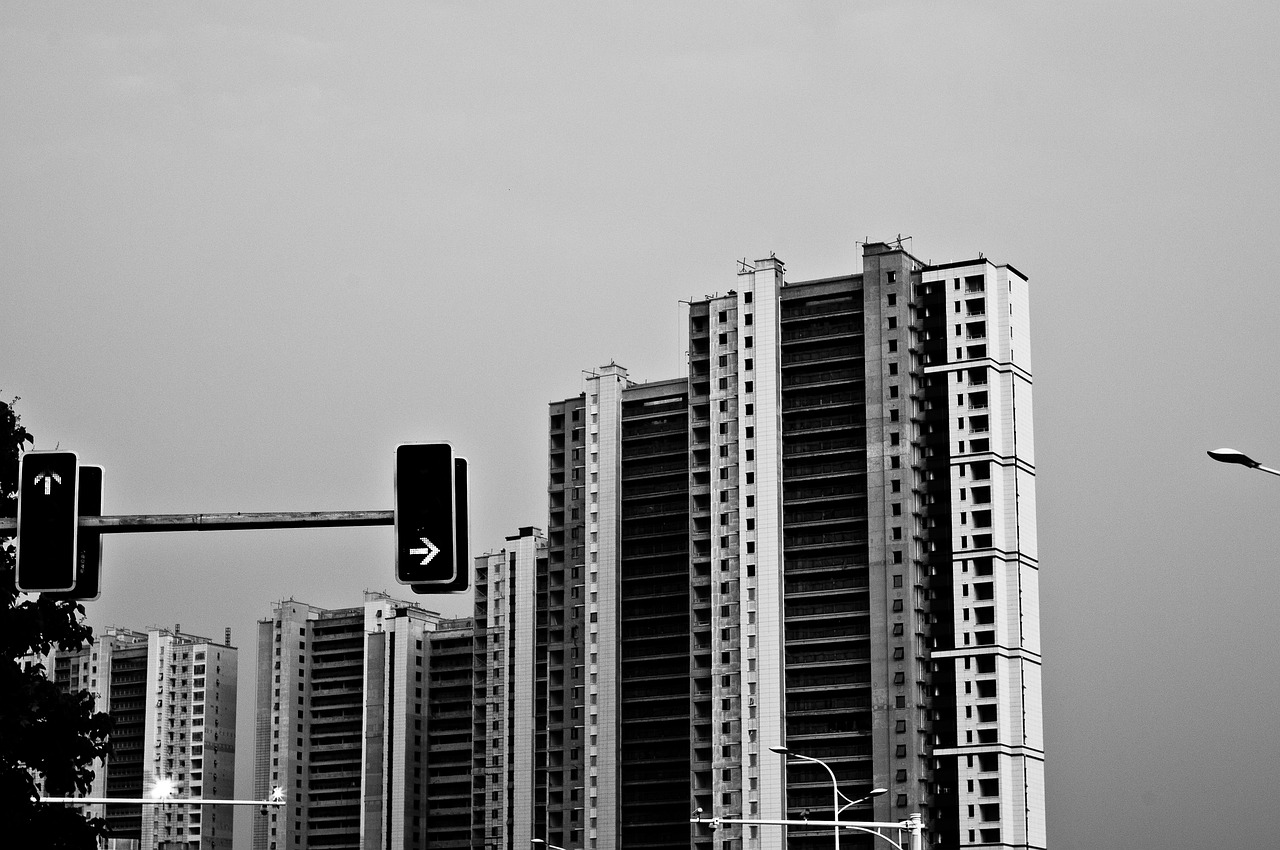
Regulatory Framework and Compliance
When it comes to the safety of our homes, understanding the regulatory framework surrounding residential construction is absolutely essential. These regulations are not just arbitrary rules; they are meticulously crafted guidelines designed to protect homeowners and ensure the structural integrity of buildings. By adhering to these regulations, homeowners can significantly reduce the risk of structural failures and ensure their safety.
Local building codes serve as the backbone of this regulatory framework. They outline the minimum safety standards that must be met during the construction and renovation of residential buildings. These codes take into account various factors such as the type of materials used, the design of the structure, and the environmental conditions of the area. For instance, a home built in a flood-prone area will have different requirements compared to a house in a seismic zone. Understanding these codes is crucial for anyone looking to build or renovate their home.
Moreover, compliance with these building codes is not just a matter of following the law; it also has significant implications for homeowners. Non-compliance can lead to serious legal and financial repercussions. For example, if a homeowner decides to undertake a renovation without obtaining the necessary permits or fails to adhere to safety standards, they could face hefty fines or even be forced to undo the work. Additionally, in the event of an accident or structural failure, non-compliance can lead to liability issues, leaving homeowners vulnerable to lawsuits.
To illustrate the importance of compliance, consider the following table that highlights some common building code violations and their potential consequences:
| Violation | Potential Consequences |
|---|---|
| Building without a permit | Fines, mandatory removal of unpermitted work |
| Insufficient structural support | Increased risk of collapse, liability for injuries |
| Failure to comply with fire safety codes | Fines, increased insurance premiums, liability for damages |
It's clear that understanding and complying with building codes is critical not only for the safety of the structure but also for the financial security of the homeowners. Many people may underestimate the importance of these regulations, thinking they are just a formality. However, they play a vital role in ensuring that homes are built to withstand various challenges, from natural disasters to everyday wear and tear.
In conclusion, navigating the regulatory framework and ensuring compliance with building codes is a responsibility that every homeowner should take seriously. By doing so, they can protect their investment, ensure the safety of their families, and contribute to the overall well-being of their communities.
- What are building codes? Building codes are regulations that set the minimum standards for construction and renovation to ensure safety and structural integrity.
- Why is compliance important? Compliance with building codes is crucial to avoid legal issues, financial penalties, and to ensure the safety of the structure.
- How can I find out about local building codes? Homeowners can typically find information about local building codes through their city or county's building department or website.
- What should I do if I suspect a violation? If you suspect a violation, it's best to consult with a professional inspector or contact your local building authority for guidance.
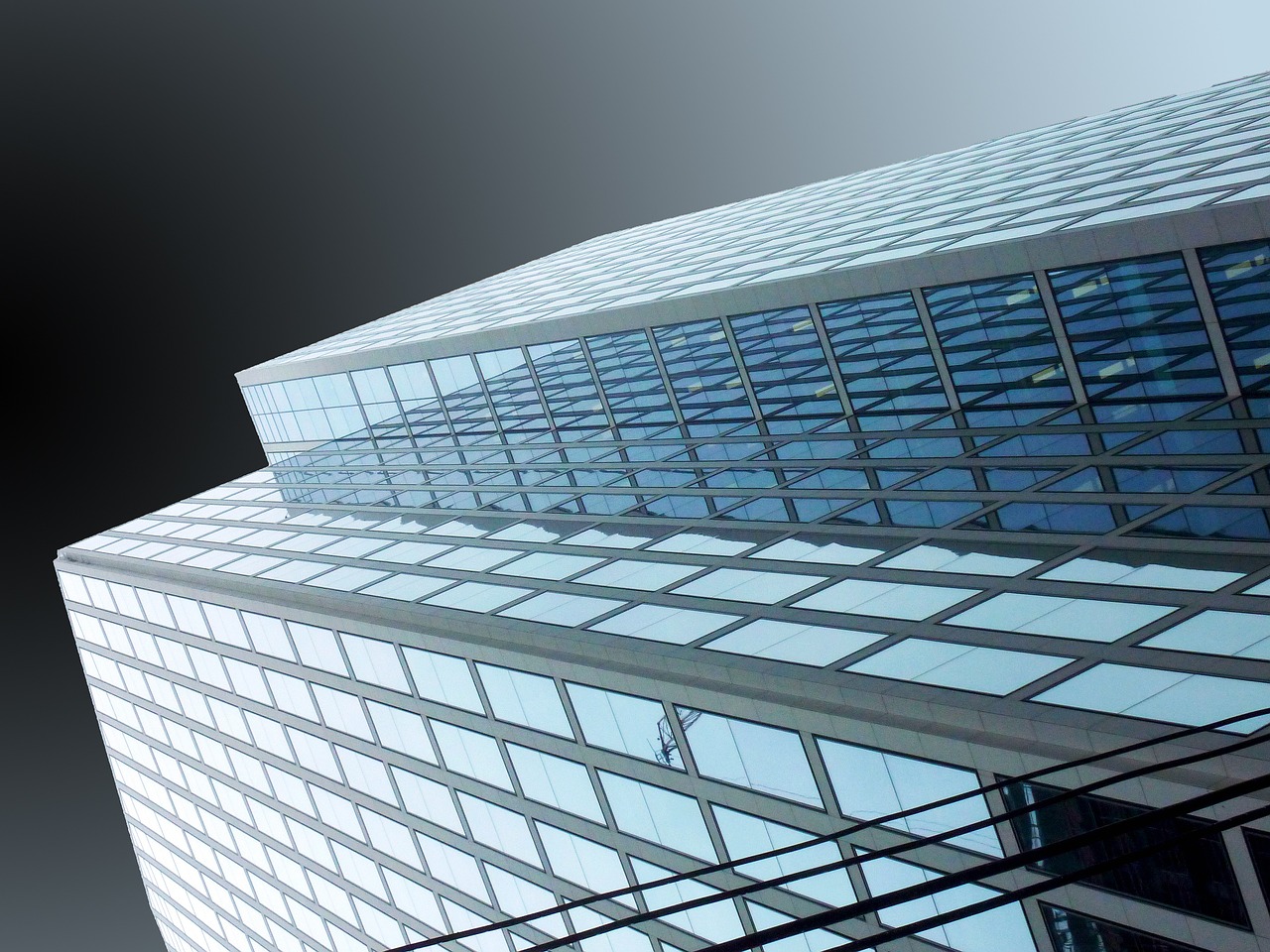
Importance of Building Codes
Building codes are more than just a set of rules; they are the backbone of safe and resilient construction practices. These codes are established by local governments and are designed to protect the health, safety, and welfare of the public. Imagine building a house without any guidelines—it's like sailing a ship without a compass. You may end up in uncharted waters, facing unforeseen dangers. Building codes provide that necessary direction, ensuring that homes can withstand various stresses, from the weight of the roof to the forces of nature.
The significance of building codes lies in their ability to enforce minimum safety standards. These regulations address a range of issues, including structural integrity, fire safety, electrical systems, plumbing, and environmental considerations. For instance, a well-constructed home in compliance with building codes will have proper electrical wiring that minimizes the risk of fires. It's not just about following rules; it's about ensuring that every nail, beam, and wire contributes to a safe living environment.
Furthermore, building codes help to create a level playing field for builders and contractors. When everyone adheres to the same set of standards, it reduces the likelihood of subpar construction practices that could endanger homeowners. This compliance fosters a sense of trust within communities, as residents can feel confident that their neighbors' homes are built to the same safety standards as their own.
To illustrate the impact of building codes, consider the following table that highlights some of the key areas they cover and their importance:
| Building Code Area | Importance |
|---|---|
| Structural Integrity | Ensures buildings can withstand loads and natural forces. |
| Fire Safety | Reduces the risk of fire hazards through proper materials and design. |
| Electrical Systems | Prevents electrical failures that could lead to fires or electrocution. |
| Plumbing | Minimizes risks of leaks and water damage, protecting the structure. |
| Environmental Considerations | Promotes sustainability and energy efficiency in construction. |
In addition to ensuring safety, building codes can also impact property values. Homes built in compliance with these codes are often more attractive to buyers, as they represent a lower risk of future repairs or safety issues. On the other hand, properties that do not meet these standards may face decreased value and increased scrutiny from potential buyers. In essence, adhering to building codes is not just a legal obligation; it is an investment in the future of your home.
In conclusion, building codes are essential for creating safe, durable, and valuable homes. By understanding and complying with these regulations, homeowners and builders alike contribute to a safer community. So, the next time you think about construction or renovation, remember that these codes are there to protect you and your loved ones, ensuring that your home is not only a place of comfort but also a fortress against potential dangers.

Compliance and Liability
When it comes to the structural safety of homes, compliance with building regulations is not just a matter of following rules; it’s about protecting lives and investments. Homeowners often underestimate the importance of adhering to these regulations, thinking of them as mere guidelines rather than essential safeguards. However, the reality is that non-compliance can lead to severe legal and financial repercussions that can leave homeowners in dire situations.
Imagine investing your hard-earned money into your dream home, only to discover that it was built without following the necessary codes. If structural issues arise, you could find yourself facing hefty repair bills, legal battles, or worse—your home could be deemed unsafe for occupancy. This is why understanding the implications of compliance is crucial for every homeowner.
To illustrate the potential consequences of non-compliance, consider the following:
| Consequences of Non-Compliance | Description |
|---|---|
| Legal Action | Homeowners may face lawsuits from neighbors or local authorities if their property poses a risk to others due to non-compliance. |
| Financial Loss | Repair costs for non-compliant structures can be astronomical, often exceeding initial construction costs. |
| Insurance Issues | Insurance companies may refuse to cover damages related to non-compliant structures, leaving homeowners to foot the bill. |
| Decreased Property Value | A home that doesn't meet safety standards can significantly decrease in value, making it difficult to sell. |
Moreover, it's essential to recognize that the responsibility for compliance does not solely rest on builders and contractors. Homeowners also play a vital role in ensuring that their homes meet safety standards. This means being proactive in understanding local building codes and regulations and ensuring that any renovations or additions to the home are compliant. Ignorance of the law is not an excuse, and being informed can save homeowners from future headaches.
In summary, the implications of failing to adhere to building regulations can be severe. Homeowners must take an active role in understanding their responsibilities and ensuring that their homes comply with all safety standards. By doing so, they not only protect their investment but also contribute to the overall safety and well-being of their community.
- What are building codes? Building codes are a set of regulations that govern the construction and renovation of buildings to ensure safety, health, and welfare.
- What are the consequences of not following building codes? Non-compliance can lead to legal action, financial loss, and issues with property insurance.
- How can I ensure my home complies with local regulations? Consult with local building authorities and hire licensed professionals who are familiar with local codes.
- Can I be held liable for non-compliance if I buy a home? Yes, as a homeowner, you can be held liable for any structural issues that arise from non-compliance, even if the violations occurred before your ownership.
Frequently Asked Questions
- What is structural safety and why is it important?
Structural safety refers to a building's ability to withstand various loads and environmental pressures while protecting its occupants. It's crucial because it ensures the longevity of homes and the safety of those living in them. Imagine your house as a sturdy ship navigating through stormy seas; without structural safety, it could easily capsize!
- What are common risks to the structural safety of homes?
Common risks include natural disasters like earthquakes and floods, poor construction practices, and the degradation of materials over time. Just like a car that hasn't been maintained can break down, homes too can suffer if not built or cared for properly.
- How can I prepare my home for earthquakes?
Preparing your home for earthquakes involves incorporating certain design features and retrofitting techniques. Think of it as putting on a seatbelt before a ride; these measures can significantly reduce damage during seismic activity.
- What flood resistance measures should I consider?
Implementing flood resistance measures such as elevating your home, installing effective drainage systems, and using waterproof materials can help protect your property. It’s like building a dam around your home to keep the waters at bay!
- Why is construction quality so important?
The quality of construction is vital for ensuring structural safety. Adhering to building codes and hiring qualified professionals can prevent future problems, much like how a solid foundation keeps a tall building from swaying in the wind.
- What signs indicate potential structural damage?
Signs of structural damage can include cracks in walls, uneven floors, and signs of water damage. Recognizing these early can save you a lot of trouble down the road, just like catching a cold early can prevent it from turning into the flu!
- How often should I have my home inspected?
Regular inspections are essential to identify potential structural issues. It's recommended to have your home inspected at least once a year, much like a routine check-up at the doctor’s office to ensure everything is functioning properly.
- What role do building codes play in structural safety?
Building codes provide guidelines for construction practices to ensure safety and quality. They act as a safety net, ensuring that minimum safety standards are met, protecting not just homeowners but the entire community.
- What are the consequences of non-compliance with building regulations?
Non-compliance can lead to serious legal and financial repercussions, including fines and liability for damages. It’s like ignoring traffic laws; the consequences can be severe and costly!



















